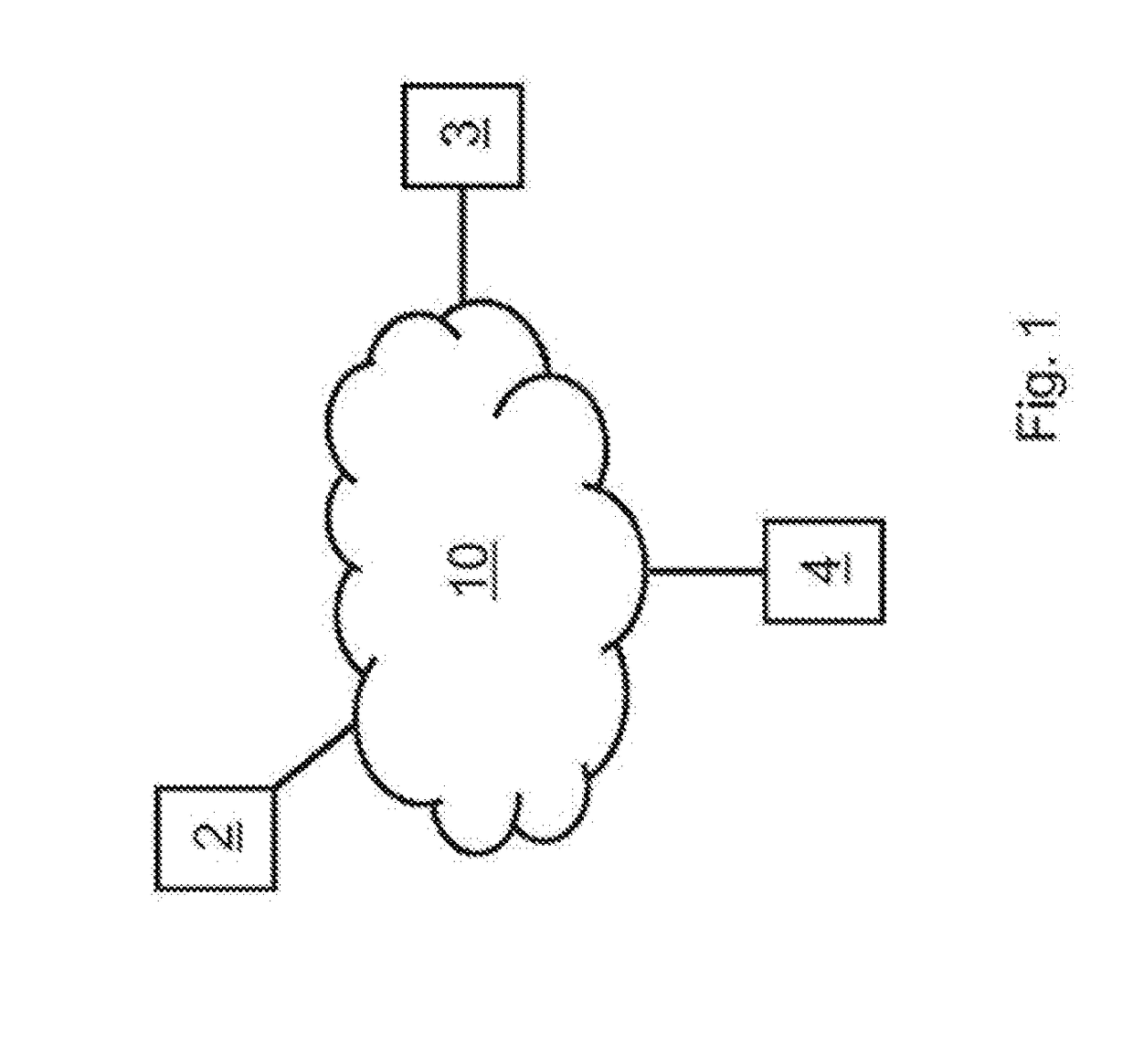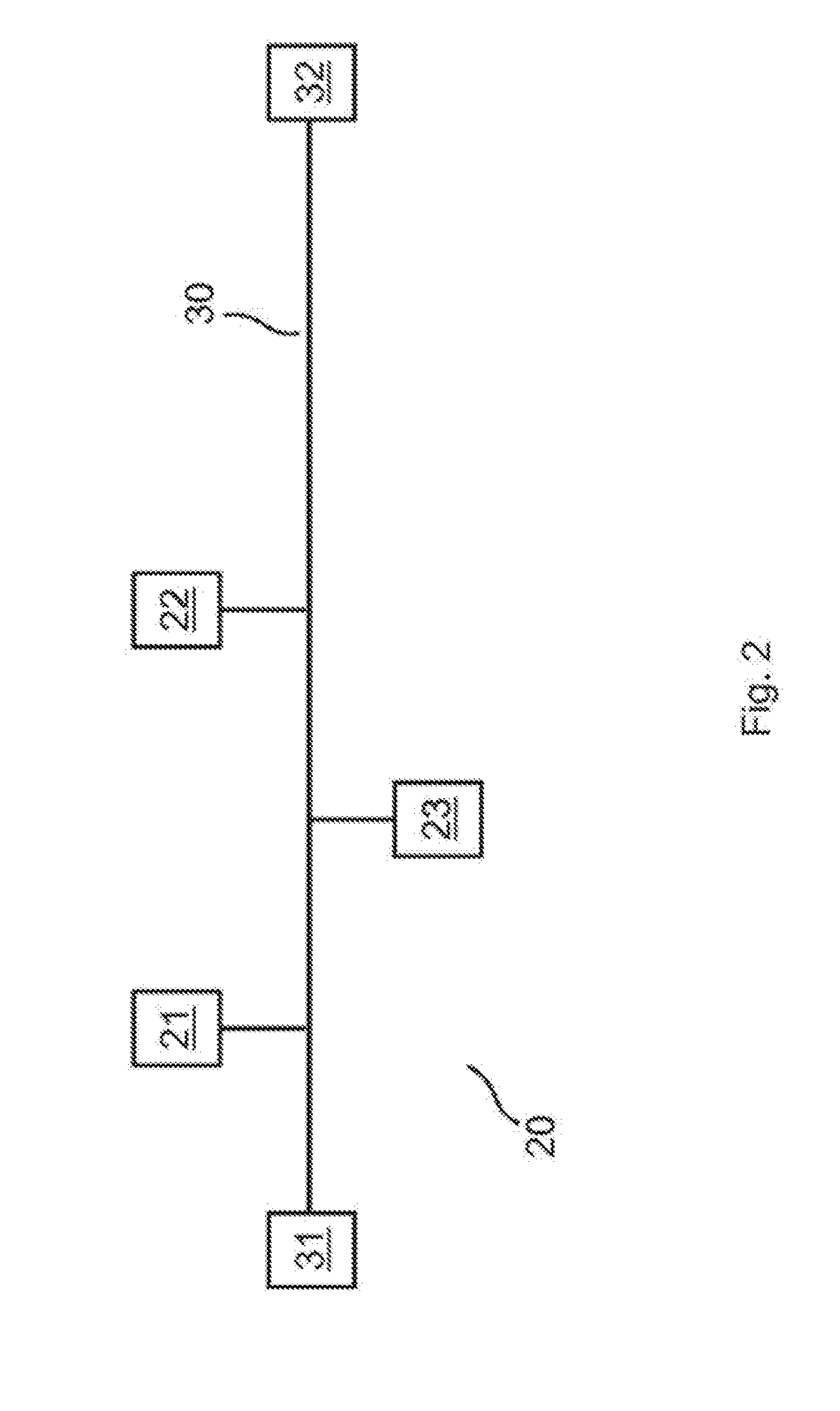Method for Generating a Secret or a Key in a Network
- Summary
- Abstract
- Description
- Claims
- Application Information
AI Technical Summary
Benefits of technology
Problems solved by technology
Method used
Image
Examples
example
[0095]Random, initial (locally generated) bit sequence of user 1:
0 1 1 0 1 0 1 1 0 1 1 0 1 0 1
[0096]Random, initial (locally generated) bit sequence of user 2:
0 1 0 1 0 0 0 0 1 1 1 1 0 1 1
[0097]Effective bit sequence on the transmission medium with logical AND combination of the individual sequences without stuffing bits:
0 1 0 0 0 0 0 0 0 1 1 0 0 0 1
[0098]If N=5 (as, e.g. in the case of CAN), there would thus be a stuffing error since the effective bit value ‘0’ is present on the transmission medium seven-times in succession.
[0099]Given the approach proposed above according to the first illustrative embodiment, in contrast, the following bit sequence would actually be present on the transmission medium:
0 1 0 0 0 0 0 1 0 0 1 1 0 0 0 1
[0100]The bit underlined is here the additionally introduced stuffing bit which is inserted both by user 1 and by user 2 and sent after they have detected the bit ‘0’ five-times on the common transmission medium. The bit sequences of Alice and Bob actual...
PUM
 Login to View More
Login to View More Abstract
Description
Claims
Application Information
 Login to View More
Login to View More - R&D
- Intellectual Property
- Life Sciences
- Materials
- Tech Scout
- Unparalleled Data Quality
- Higher Quality Content
- 60% Fewer Hallucinations
Browse by: Latest US Patents, China's latest patents, Technical Efficacy Thesaurus, Application Domain, Technology Topic, Popular Technical Reports.
© 2025 PatSnap. All rights reserved.Legal|Privacy policy|Modern Slavery Act Transparency Statement|Sitemap|About US| Contact US: help@patsnap.com



